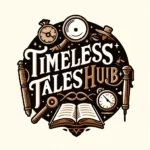“The Voyage of the Beagle” is a riotous blend of adventure, science, and inadvertent comedy, served up by none other than the esteemed Charles Darwin himself. Imagine, if you will, a young Darwin, not yet the bearded sage of evolutionary theory, but a wide-eyed amateur naturalist, setting sail on HMS Beagle. His mission? To merely chart the coastlines. But ah, what he delivers is a rollicking narrative that charts the course of scientific thought itself.
Our tale begins in 1831, a fine year for a sea voyage, except for Darwin, who spends most of it seasick. Picture him, green-faced and miserable, a far cry from the stoic figures of scientific lore. Yet, it’s from this queasy beginning that Darwin’s observations begin to challenge the very fabric of biological understanding.
The Beagle bobs from shore to exotic shore, with Darwin collecting bugs, bones, and birds with the enthusiasm of a man collecting scandalous gossip. He’s not just observing; he’s gossiping about nature’s secrets, whispering about finches, and wondering why those on one island seem to mock those on another with their slightly fancier beaks.

Now, let’s not ignore the locals and the landscapes. Darwin encounters indigenous peoples, whom he describes with a blend of Victorian condescension and genuine curiosity. It’s awkward, it’s problematic, but it’s history. He’s puzzled by their languages, customs, and how shockingly well they can survive in places where a Londoner like himself can barely manage a stroll without tripping over a new species.
And oh, the geological dramas! Mountains that tell tales, volcanic islands born before our very eyes, coral reefs in the making—all suggesting a world not static, but dramatically, tumultuously alive. Darwin, in his youthful audacity, dares to read the Earth’s autobiography, finding in its strata a story of continuous change and adaptation.
But let’s not be too serious—Darwin surely wasn’t. Each stop is a chance for mishaps and misadventures. He rides tortoises like an ungainly Victorian cowboy, dines on armadillo (describing it, with typical British gusto, as tasting like chicken), and repeatedly notes how various animals are not quite as afraid of humans as they arguably should be. Here lies the ironic delight of Darwin’s narrative: nature, both grand and utterly indifferent to human dignity.
The scientific community of the time might raise a brow at Darwin’s casual tone—today, we chuckle. He’s the unwitting comedian in the high-stakes drama of scientific discovery, tripping over tarantulas and inspiring generations to look at the natural world with fresh eyes.
In essence, “The Voyage of the Beagle” is more than a travelogue or a scientific journal. It is a youthful frolic through the wild, tangled underbrush of the world, led by a curious mind that would one day reshape how we understand life itself. Through Darwin’s eyes, we experience the wonder, the bafflement, and the occasional digestive upset that come with confronting the unknown.
So, read Darwin’s voyage not just for its scientific insights but for its sheer, exuberant humanity. It’s a testament to the notion that science is not merely a collection of facts, but a narrative filled with character, curiosity, and occasionally, seasickness. As you close the pages of this vibrant account, you might find yourself a little more observant, a little more questioning, and just a touch more willing to ride a tortoise, should the opportunity arise.


